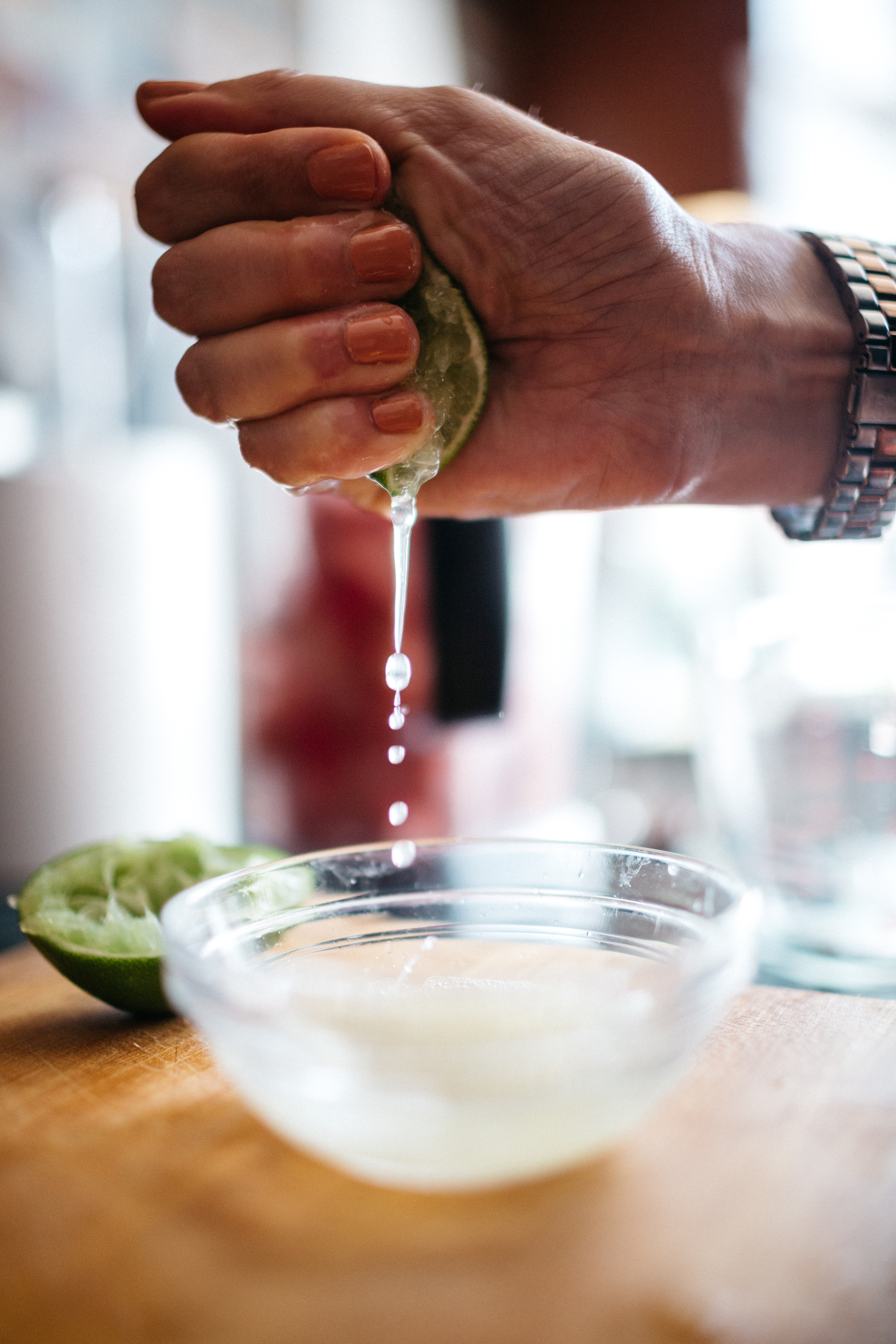All photography by Josh Telles
There are better ways to begin a blog post featuring a watermelon recipe, but I feel I should be honest.
I've never liked watermelon.
Then I made watermelon agua fresca, and I should be honest again and reveal that with the exception of two small glasses shared with my husband and a very talented photographer (more on him in a minute), I drank the entire pitcher myself in less than twenty-four hours. There was no remorse, no hesitation, and no regret, except when the pitcher was empty and I did in fact regret not making more immediately.
But it's been a week and the issue has been rectified. I've made another pitcher for myself, and officially declare this beautiful pink liquid the drink of August.
Lately, it's the small things that get me. Literally small, like the stack of onesies I opened at my baby shower earlier this month. Or figuratively small, like a series of moments strung together in a day.
Sipping this drink, rolling down the car window and smelling salt water, having my feet rubbed, sending an email to a friend, the melodic sound my necklace makes as I let the long string collapse into the bowl that holds it each night, reading three pages of a book before falling asleep with my Kindle in my right hand. I'm trying to remember everything.
So you can see why something like agua fresca, fruit and water, can be both plainly refreshing and mildly life-changing. Most days, it's the little things, like these four lines by Charles Simic.
Watermelons
by Charles Simic
Green Buddhas
On the fruit stand.
We eat the smile
And spit out the teeth.
Our baby arrives in eight weeks, give or take. In between arranging the nursery, writing thank you notes from my baby shower, cleaning out closets, shredding old files, and folding baby clothes, I'm also trying to finish up several freelance writing projects before October, which brings me to the photographer I mentioned earlier.
I've worked with Josh Telles on Life & Thyme stories over the past year, and this time he came to my house to snap photos while I cooked two recipes for my most recent story featuring produce from Farm Fresh to You.
Read more here, plus find a bonus recipe for a refreshing summer salsa!
Josh graciously agreed to let me share some of the images with you, and I'm so glad he he did, because they're too beautiful not to send into the world. It also gives you a glimpse into my kitchen, and a small peek at the belly, too.
WATERMELON-LIME AGUA FRESCA
When the days are warm, a refreshing seasonal drink is always in order. This popular Mexican beverage gets something right: celebrating fruit at its peak of freshness. Use what’s in season, add a splash of citrus, and enjoy all summer long.
4 cups diced watermelon, rinds removed
3 cups water
2-3 tablespoons fresh lime juice, plus more as needed
1 tablespoon sugar
In a high speed blender, puree the watermelon with half the water (1 ½ cups), lime juice, and sugar until smooth. Strain into a large pitcher, then stir in the remaining water. Taste, and add more lime if desired (I added an extra squeeze!). Refrigerate at least 1 hour before serving over a tall glass of ice, garnished with lime wedges and/or a few sprigs of mint.












